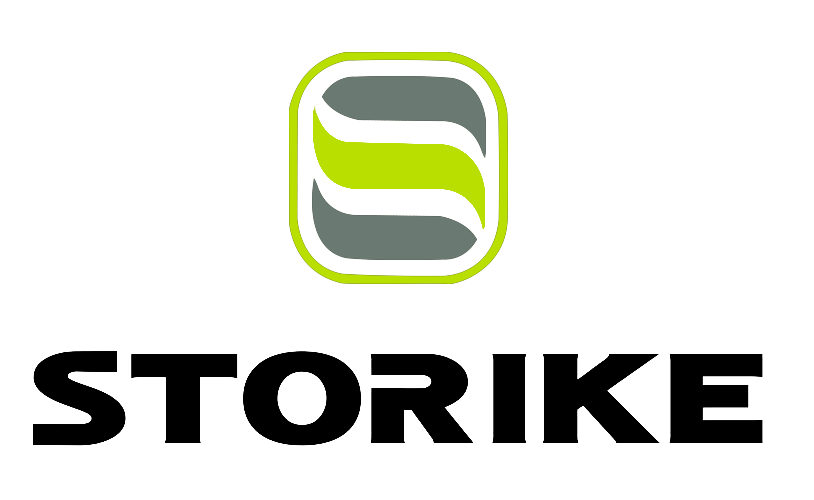การทำความเข้าใจ Skid Steer Loader เทียบกับแบคโฮ: โครงสร้างและฟังก์ชันหลัก
ความแตกต่างทางกลสำคัญในการทำงาน
เมื่อเปรียบเทียบรถขุดล้อยาง (Skid Steer Loader) กับรถขุดตีนตะขาบ (Excavator) ความแตกต่างในระบบบังคับเลี้ยวและการควบคุมระบบไฮดรอลิกส์จะเห็นได้ชัดเจน และส่งผลต่อประสิทธิภาพการทำงานของเครื่องจักรแต่ละชนิดในพื้นที่ก่อสร้าง โดยรถขุดล้อยางมีความสามารถในการหมุนกลับได้ในพื้นที่แคบมาก เนื่องจากระบบบังคับเลี้ยวพิเศษที่ทำให้ล้อทั้งสี่สามารถเคลื่อนที่ได้อย่างอิสระ ซึ่งเป็นประโยชน์อย่างมากเมื่อทำงานในพื้นที่จำกัด เช่น บนถนนในเมืองหรือภายในอาคารที่มีพื้นที่ใช้งานน้อย ในทางกลับกัน รถขุดตีนตะขาบมาพร้อมกับตีนตะขาบที่มีน้ำหนักมาก ช่วยให้เครื่องมีความมั่นคงแม้ขณะขุดพื้นดินที่มีสภาพยากลำบาก ความแตกต่างดังกล่าวจึงมีความสำคัญอย่างมากในการเลือกเครื่องจักรให้เหมาะสมกับงานที่ต้องการ ผู้รับเหมาควรพิจารณาว่าจำเป็นต้องใช้เครื่องจักรที่เคลื่อนย้ายได้ง่ายในพื้นที่แคบ หรือเครื่องจักรที่สามารถยึดเหนียวและทำงานขุดเจาะหนักได้อย่างมีประสิทธิภาพ
ระบบไฮดรอลิกในเครื่องจักรสองชนิดนี้ทำงานแตกต่างกันอย่างสิ้นเชิง ยกตัวอย่างเช่น เครื่องโหลดแบบ skid steer loaders ที่ถูกออกแบบมาให้มีขนาดเล็กและเบามาก ซึ่งเหมาะสำหรับการทำงานในพื้นที่แคบตามสถานที่ก่อสร้าง แต่ขนาดที่กะทัดรัดนี้ก็ทำให้มันยกน้ำหนักได้ไม่มากเท่ากับเครื่องจักรขนาดใหญ่อย่างเครื่องขุด (excavators) ในขณะที่เครื่องขุดนั้นมีระบบไฮดรอลิกที่ทรงพลัง ช่วยให้ผู้ควบคุมสามารถขุดดินที่มีความแข็งหรือสภาพยากลำบาก รวมทั้งเคลื่อนย้ายดินหรือเศษซากจำนวนมากได้ตลอดทั้งวันโดยไม่มีปัญหา เมื่อผู้รับเหมากำลังตัดสินใจว่าจะนำเครื่องจักรชนิดใดมาใช้ในพื้นที่งาน พวกเขาจะเปรียบเทียบความคล่องตัวในการใช้งานกับน้ำหนักของสิ่งที่จำเป็นต้องเคลื่อนย้ายเป็นหลัก และพูดตามตรงแล้ว ประสิทธิภาพของระบบไฮดรอลิกมักเป็นตัวกำหนดว่าการทำงานนั้นจะประสบความสำเร็จหรือล้มเหลว ขึ้นอยู่กับลักษณะงานในแต่ละวัน
การใช้งานเฉพาะทางสำหรับรถขุดตักหน้าหลัง
สำหรับงานภูมิทัศน์นั้น รถขุดล้อยางแบบหันศูนย์มีบทบาทสำคัญอย่างมาก เครื่องจักรเหล่านี้ช่วยให้ผู้ควบคุมสามารถทำงานได้รวดเร็วขึ้นเมื่อต้องปรับระดับพื้นผิวหรือเคลื่อนย้ายวัสดุทุกประเภท ความลับคืออะไร? พื้นที่ขนาดเล็กของมันพร้อมกับความสามารถในการเลี้ยวที่คล่องตัวทำให้มันเหมาะสำหรับการบุกตะลุยเข้าไปในพื้นที่แคบๆ ที่เครื่องจักรขนาดใหญ่กว่านั้นเข้าไปไม่ได้ ผู้ประกอบการภูมิทัศน์ชอบใช้เครื่องจักรขนาดเล็กแต่ทรงพลังเหล่านี้เพื่อเช่น การปรับสนามหญ้าให้เรียบหลังการติดตั้ง หรือขนถุงดินร่วนซุยข้ามพื้นที่ สิ่งที่ได้คือสามารถลดเวลาการทำงานที่ต้องใช้แรงงานหนัก และเพิ่มเวลาให้กับการสานงานให้เสร็จตามกำหนดเวลา
รถขุดล้อยางแบบหันศูนย์มีคุณค่าอย่างไร? คำตอบคือ รถประเภทนี้สามารถติดตั้งอุปกรณ์เสริมหลากหลายชนิดที่สามารถเปลี่ยนถ่ายได้ตามความต้องการในการทำงาน เช่น กระบะสำหรับขนย้ายวัสดุ หรือ ไม้ยกรับพาเลท และแม้แต่เครื่องกวาดสำหรับทำความสะอาดหลังงาน เมื่อติดตั้งอุปกรณ์เสริมที่หลากหลายเหล่านี้ รถขนาดเล็กแต่ทรงพลังเหล่านี้จะกลายเป็นเครื่องจักรที่มีความหลากหลายในการใช้งานสูงมาก ซึ่งเหมาะกับโครงการก่อสร้างขนาดกลางเกือบทุกประเภท คุณต้องการเรียงกล่องในโกดังหรือไม่? ต้องการกำจัดหิมะในฤดูหนาว? หรือแม้แต่รื้อถอนอาคารเก่า? รถขุดล้อยางแบบหันศูนย์สามารถรับมือกับงานเหล่านี้ได้ทั้งสิ้น ปัจจุบันคุณสามารถพบเห็นรถประเภทนี้ได้เกือบทุกที่ เนื่องจากมันสามารถปรับตัวให้เหมาะกับงานต่างๆ ไม่ว่าจะเป็นในโรงงาน โครงการจัดสวน หรืองานปรับปรุงอาคาร
ศักยภาพของเครื่องจักรขุดเจาะสำหรับงานขุดหนัก
เครื่องจักรขุดเจาะถูกออกแบบมาเพื่อทำงานขุดเจาะที่จริงจัง โดยเครื่องขุดเจาะได้กลายเป็นอุปกรณ์ที่ขาดไม่ได้สำหรับทุกคนที่ทำงานเกี่ยวกับการก่อสร้างฐานรากหรือโครงการขุดเจาะขนาดใหญ่ ด้วยถังขุดขนาดใหญ่และแขนยาว เครื่องจักรชนิดนี้สามารถเอื้อมลงไปในพื้นดินได้ลึกมาก เราพูดถึงความลึกที่หากขุดด้วยแรงงานคนคงต้องใช้เวลานานหลายวัน ซึ่งเป็นสิ่งสำคัญมากเมื่อเตรียมตัวสำหรับการสร้างอาคารใหม่หรือการวางท่อและสายเคเบิลใต้ดิน ความสามารถในการขุดเจาะที่ลึกและแม่นยำนั้นสร้างความแตกต่างอย่างมากในสถานที่ทำงาน โดยการดำเนินการให้ถูกต้องตั้งแต่ครั้งแรกช่วยประหยัดทั้งค่าใช้จ่ายและปัญหาที่อาจเกิดขึ้นในภายหลัง
เครื่องขุดเจาะถูกออกแบบมาให้มีความทนทานเพียงพอที่จะรับมือกับการขุดลึกอย่างจริงจัง ซึ่งหมายความว่าพวกมันสามารถทำงานได้ในเกือบทุกสภาพดินบนพื้นที่ทั้งที่เป็นที่อยู่อาศัยหรือพื้นที่เชิงพาณิชย์ เครื่องจักรเหล่านี้ไม่ได้เก่งแค่เรื่องเดียวเท่านั้น แต่ยังสามารถใช้งานได้หลากหลาย เช่น การขุดลอกบ่อน้ำและทะเลสาบ ไปจนถึงการรื้อถอนอาคารเก่าเมื่อจำเป็น ความหลากหลายในการใช้งานแบบนี้จึงเป็นเหตุผลว่าทำไมผู้รับเหมาจำนวนมากถึงมักจะมีเครื่องขุดเจาะไว้ใช้งานสำหรับงานที่ต้องใช้แรงม้าที่แท้จริงใต้ระดับพื้นดิน ทั้งผู้ออกแบบภูมิทัศน์และวิศวกรก่อสร้างต่างพึ่งพาเครื่องจักรหนักเหล่านี้ เพราะไม่มีใครอยากให้โครงการของตนต้องล่าช้าเนื่องจากอุปกรณ์ที่ไม่สามารถทำงานได้อย่างมีประสิทธิภาพ
การประยุกต์ใช้งานในสถานที่ทำงาน: จุดเด่นของเครื่องจักรแต่ละชนิด
รถโหลดเกลียวควบคุมด้วยพวงมาลัย (Skid Steer Loaders) ในงานก่อสร้างถนนและการจัดสวน
รถขุดล้อยางแบบหันศูนย์ (Skid steer loaders) ได้กลายเป็นเครื่องจักรที่เกือบจะขาดไม่ได้ในโครงการก่อสร้างถนน ด้วยความคล่องตัวและการควบคุมที่ง่าย รวมถึงขนาดที่กะทัดรัด เครื่องจักรเหล่านี้สามารถทำงานที่เกี่ยวข้องกับวัสดุหลากหลายประเภท ช่วยให้คนงานสามารถเคลื่อนย้ายสิ่งของ ยกของหนัก และปรับระดับพื้นผิว โดยไม่ต้องใช้พื้นที่มาก ซึ่งเป็นสิ่งสำคัญมากเมื่อทำงานในสภาพแวดล้อมของเมืองที่แออัด จุดเด่นที่แท้จริงคือความสามารถที่หลากหลายของรถขุดล้อยางเหล่านี้ในการใช้งานด้านงานภูมิทัศน์ เช่น การปรับพื้นที่ขรุขระให้เรียบ หรือการเคลียร์เศษซากหลังจากที่รื้อถอนเสร็จ ไม่มีอะไรเทียบกับความยืดหยุ่นของรถขุดล้อยางที่ดีได้ ผู้รับเหมาที่พึ่งพาเครื่องจักรเหล่านี้รายงานว่าสามารถทำงานเสร็จได้เร็วขึ้นและได้ผลลัพธ์ที่ดีขึ้นโดยรวม ซึ่งเป็นเหตุผลว่าทำไมจึงเห็นรถเหล่านี้อยู่ประจำตามพื้นที่ก่อสร้างต่างๆ
เครื่องขุดเจาะสำหรับงานฐานรากลึกและงานขุดคู
เมื่อพูดถึงการขุดฐานรากลึก ๆ แล้ว ไม่มีเครื่องจักรชนิดใดเทียบกับเครื่องขุด (excavator) ในการทำคูเมื่อต้องขุดลึกลงไปใต้ระดับพื้นดินเกิน 20 ฟุต เครื่องจักรเหล่านี้สามารถขุดเจาะได้อย่างแม่นยำ ซึ่งมีความสำคัญอย่างมากในการทำให้อาคารมีความมั่นคงแข็งแรง และนี่เป็นผลจากการใช้ระบบไฮดรอลิกที่ทนทาน ซึ่งให้ผู้ควบคุมสามารถควบคุมการขุดในแต่ละครั้งได้อย่างละเอียด นอกจากนี้แม้เครื่องขุดจะเหมาะสำหรับงานฐานรากแล้ว แต่ก็ไม่ได้จำกัดแค่เพียงงานประเภทนี้ ทีมงานก่อสร้างยังพึ่งพาเครื่องขุดสำหรับงานขุดคูหลายประเภท เช่น การวางท่อ หรือการติดตั้งระบบระบายน้ำ สิ่งที่ทำให้เครื่องจักรเหล่านี้โดดเด่นคือ ความสามารถในการจัดการดินที่แข็งและยากต่อการปฏิบัติงาน ซึ่งเป็นเหตุผลว่าทำไมผู้รับเหมาทั่วประเทศจึงเลือกใช้เครื่องขุดทุกครั้งที่จำเป็นต้องขุดหลุมลึกสำหรับบ้านหรืออาคารสำนักงาน เพราะเครื่องจักรเหล่านี้สามารถทำงานได้โดยที่อุปกรณ์อื่นอาจติดขัด
โซลูชันแบบผสม: เมื่อใดควรใช้เครื่องจักรทั้งสองชนิดควบคู่กัน
เมื่อทำงานในไซต์ก่อสร้าง ทีมงานมักพบว่าการใช้รถขุดตีนตะขาบควบคู่ไปกับรถขุดเล็กจะให้ผลลัพธ์ที่ดีกว่าการพึ่งพาเครื่องจักรเพียงประเภทเดียว ตัวอย่างเช่น การเตรียมพื้นที่สำหรับโครงการบ้านจัดสรรม รถขุดตีนตะขาบจะทำหน้าที่เคลื่อนย้ายวัสดุทั้งหมด ในขณะที่รถขุดเล็กจะรับมือกับงานที่ยากกว่า เช่น การขุดร่องหรือฐานราก การใช้ร่วมกันแบบนี้มักช่วยประหยัดค่าใช้จ่าย เพราะเครื่องแต่ละชนิดทำงานที่ออกแบบมาให้ทำได้ดีที่สุด การรอคอยอุปกรณ์ลดลง ทำให้โครงการแล้วเสร็จเร็วกว่าที่คาดไว้ ผู้รับเหมาที่มีความชำนาญจะจับคู่เครื่องจักรอย่างมีกลยุทธ์ตามลักษณะงานและตำแหน่งที่ต้องการ ซึ่งช่วยให้การทำงานโดยรวมราบรื่นตั้งแต่ต้นจนจบ
เปรียบเทียบสมรรถนะ: พลัง ความแม่นยำ และผลิตภาพ
ความสามารถในการยกและแรงกดของถัง
การรู้จักขีดความสามารถในการยกและแรงขุดของเครื่องอัดดินแบบล้อเลื่อน (Skid Steer Loader) เทียบกับเครื่องขุด (Excavator) จะช่วยให้เข้าใจว่าเครื่องจักรชนิดใดเหมาะสมที่สุดสำหรับงานต่างๆ บนพื้นที่ก่อสร้าง เครื่องอัดดินส่วนใหญ่มีขีดความสามารถในการยกน้ำหนักได้ระหว่าง 600 ถึง 3,400 ปอนด์ ขึ้นอยู่กับยี่ห้อและรุ่น ซึ่งทำให้มันเหมาะสำหรับการเคลื่อนย้ายวัสดุในพื้นที่แคบ เช่น พื้นที่จัดสวนหรือบริเวณก่อสร้างขนาดเล็ก ส่วนเครื่องขุดนั้นมีเรื่องราวที่แตกต่างออกไป เครื่องจักรขนาดใหญ่เหล่านี้สามารถรับมือกับน้ำหนักที่มากกว่ามาก จึงเหมาะสำหรับโครงการปรับดินขนาดใหญ่ที่ต้องการแรงฉุดแบบเต็มประสิทธิภาพ เมื่อพิจารณาถึงแรงขุด เครื่องอัดดินแบบล้อเลื่อนโดดเด่นในพื้นที่จำกัดที่ต้องการความระมัดระวังในการเคลื่อนย้ายวัสดุ ในขณะที่เครื่องขุดมีแรงขุดที่ทรงพลังสำหรับการขุดคูเมืองลึกหรือเจาะพื้นดินที่มีความแข็งแรงสูง การเลือกใช้อุปกรณ์ให้เหมาะสมจะช่วยให้ทีมก่อสร้างหลีกเลี่ยงการเสียเวลาด้วยเครื่องมือที่ไม่เหมาะสม ช่วยประหยัดค่าใช้จ่ายและทำให้โครงการดำเนินไปตามกำหนดเวลา
การควบคุมในพื้นที่แคบ
รถขุดตีนตะขาบมีจุดเด่นเมื่อต้องเคลื่อนที่ในพื้นที่แคบซึ่งเครื่องจักรทั่วไปไม่สามารถเข้าไปทำงานได้ ขนาดที่กะทัดรัดและการเลี้ยวที่คล่องตัวทำให้เครื่องจักรเหล่านี้สามารถทำงานได้อย่างยอดเยี่ยมในโครงการก่อสร้างในเมืองหรืองานภูมิทัศน์ที่ถูกจำกัดพื้นที่ระหว่างตัวอาคาร ผมเคยเห็นมันใช้ในการเก็บเศษซากจากตรอกแคบๆ และขุดหลุมสำหรับฐานอาคารในพื้นที่คับขันที่อุปกรณ์ขนาดใหญ่กว่านั้นคงติดขัดจนไม่สามารถหมุนตัวได้ เครื่องขุด (excavator) อาจทำงานได้ดีในพื้นที่โล่งกว้าง ซึ่งไม่ต้องสงสัยเลยว่ามันทำได้ดี แต่ก็มีข้อจำกัดเมื่ออยู่ในพื้นที่แคบ แม้ว่าเครื่องขุดจะมีขนาดใหญ่กว่าและเอื้อมได้ไกลกว่า แต่บ่อยครั้งที่มันกลับกลายเป็นอุปสรรคต่อตัวมันเองในพื้นที่ปิด นั่นจึงเป็นเหตุผลที่ผู้รับเหมาที่มีความเชี่ยวชาญจะเลือกใช้รถขุดตีนตะขาบแทนเครื่องขุดทุกครั้งที่สามารถทำได้ในสภาพแวดล้อมการทำงานที่จำกัด พิจารณาให้ดีๆ ก็ถือว่าสมเหตุสมผล เพราะไม่มีใครอยากเสียเวลาพยายามบังคับเครื่องจักรขนาดใหญ่ให้เคลื่อนที่ผ่านพื้นที่ที่ออกแบบมาให้คนเดินเท้าใช้งาน
ข้อจำกัดด้านความลึกและความยาวในการขุด
เมื่อเปรียบเทียบความลึกและความสามารถในการเข้าถึงระหว่างรถขุดล้อยางและเครื่องขุด ความแตกต่างนี้มีความสำคัญอย่างมากในการเลือกเครื่องจักรที่เหมาะสมกับงาน โดยทั่วไปแล้วรถขุดล้อยางไม่สามารถเทียบเท่าพลังการขุดของเครื่องจักรขนาดใหญ่ได้ เนื่องจากโครงสร้างของมันเอง รถขุดล้อยางเหมาะที่สุดสำหรับงานใกล้พื้นผิว เช่น การเคลื่อนย้ายดินหรือกำจัดเศษซากมากกว่าจะใช้ขุดลึกอย่างจริงจัง แต่สำหรับเครื่องขุดนั้นเล่าอีกเรื่องหนึ่ง เครื่องจักรขนาดใหญ่เหล่านี้สามารถขุดลึกลงไปได้มากกว่า 20 ฟุต ซึ่งมีความสำคัญอย่างมากต่อการก่อสร้างฐานรากหรือขุดคูระบายน้ำสำหรับท่อและสายเคเบิล โดยทั่วไปผู้ผลิตเครื่องจักรก่อสร้างจะระบุตัวเลขเหล่านี้ไว้อย่างชัดเจนในเอกสารข้อมูลจำเพาะ ทำให้หัวหน้างานเข้าใจอย่างชัดเจนว่าเครื่องจักรแต่ละชนิดสามารถรับมือกับงานใดได้บ้าง ในพื้นที่ก่อสร้างจริง เราก็ได้เห็นทีมงานนำเครื่องจักรทั้งสองประเภทมาใช้ร่วมกันอย่างมีประสิทธิภาพ โดยใช้รถขุดล้อยางจัดการกับพื้นที่แคบ และใช้เครื่องขุดจัดการกับงานที่ต้องการความแข็งแรงและระยะเข้าถึงที่มากกว่า ทำให้เกิดกระบวนการทำงานที่รวดเร็วขึ้น ไม่เสียเวลาและทรัพยากรโดยเปล่าประโยชน์
การวิเคราะห์ต้นทุน: การคำนึงถึงการเป็นเจ้าของกับการเช่า
ราคาซื้อเริ่มต้นของแต่ละผู้ผลิต
สำหรับบริษัทรับเหมาก่อสร้างที่กำลังมองหาเครื่องจักร ข้อมูลเกี่ยวกับราคาที่แตกต่างกันของผู้ผลิตต่างๆ มีความสำคัญอย่างมาก โดยเฉพาะรถตักล้อยางจากแบรนด์ชั้นนำ ราคาจะขึ้นอยู่กับรุ่นที่ต้องการและสเปคที่สำคัญที่สุด สำหรับรุ่นพื้นฐานอาจมีราคาประมาณ 25,000 ดอลลาร์โดยประมาณ แต่รุ่นที่มีฟังก์ชันเสริมเพิ่มเติมอาจมีราคาสูงถึง 60,000 ดอลลาร์หรือมากกว่า ขึ้นอยู่กับผู้ขาย ส่วนเครื่องจักรประเภทมินิเอ็กซ์คาเวเตอร์ก็มีแนวโน้มคล้ายกัน โดยทั่วไปมักเริ่มต้นที่ประมาณ 30,000 ดอลลาร์ และรุ่นท็อปที่มีฟีเจอร์ครบครันอาจสูงถึง 80,000 ดอลลาร์เมื่อซื้อพร้อมอุปกรณ์ทั้งหมดที่ต้องการ ทำไมราคาถึงมีช่วงต่างกันมากขนาดนี้? ชื่อเสียงของแบรนด์มีบทบาทสำคัญ เครื่องจักรจากแบรนด์ที่มีชื่อเสียงมักมีราคาสูงกว่า นอกจากนี้ยังขึ้นอยู่กับสมรรถนะของเครื่องจักรและความพร้อมของฟีเจอร์พิเศษที่สามารถให้เหตุผลในการจ่ายเงินเพิ่มเติมได้
ประสิทธิภาพการใช้เชื้อเพลิงและความคุ้มค่าในระยะยาว
เมื่อเปรียบเทียบเครื่องจักรชนิดต่างๆ ประสิทธิภาพการใช้เชื้อเพลิงและค่าใช้จ่ายในการดำเนินงานในระยะยาวมีความสำคัญมาก ยกตัวอย่างเช่น รถขุดล้อยาง (Skid Steer Loader) เทียบกับเครื่องขุด (Excavator) ซึ่งตัวเลขการใช้เชื้อเพลิงแตกต่างกันมาก ระบบเครื่องยนต์ดีเซลมักจะมีประสิทธิภาพด้านต้นทุนโดยรวมที่ดีกว่าหากนำมาใช้งานเป็นเวลานาน แต่ปัจจุบันสิ่งต่างๆ เปลี่ยนแปลงไปอย่างรวดเร็ว ข้อมูลตลาดล่าสุดแสดงให้เห็นว่ามีจำนวนผู้ใช้งานที่เพิ่มขึ้นเรื่อยๆ หันมาใช้รุ่นที่เป็นไฟฟร์แทน เพราะช่วยประหยัดค่าใช้จ่ายในการดำเนินงานและเป็นมิตรกับสิ่งแวดล้อมมากกว่า แน่นอนว่าอุปกรณ์ที่ใช้ดีเซลอาจมีราคาถูกกว่าในตอนเริ่มต้น แต่ค่าเชื้อเพลิงรายเดือนอาจเพิ่มขึ้นอย่างรวดเร็ว ยิ่งไปกว่านั้น รัฐบาลทั่วโลกต่างก็เพิ่มความเข้มงวดในเรื่องกฎระเบียบด้านการปล่อยมลพิษในทุกปี บริษัทหลายแห่งจึงพบว่าตนเองต้องเปลี่ยนมาใช้ทางเลือกที่เป็นไฟฟ้าเพื่อลดค่าใช้จ่ายในระยะยาว
แนวโน้มตลาดเช่าอุปกรณ์ขนาดเล็ก
ตลาดเช่าเครื่องจักรแบบ Skid Steer Loader และเครื่องขุดเจาะกำลังมีการเติบโตอย่างมากในขณะนี้ โดยส่วนใหญ่เป็นเพราะบริษัทก่อสร้างต้องการความยืดหยุ่นมากขึ้นในปัจจุบัน จากข้อมูลอุตสาหกรรมล่าสุด พบว่าธุรกิจจำนวนมากเลือกที่จะเช่าแทนการซื้อเครื่องจักรขนาดเล็กเหล่านี้ เหตุผลคืออะไรหรือ? เมื่อโครงการเปลี่ยนทิศทางหรือขยายตัวขึ้น/ลงอย่างกะทันหัน การเป็นเจ้าของเครื่องจักรจะก่อให้เกิดความยุ่งยากและค่าใช้จ่ายเพิ่มเติม การเช่าสามารถแก้ปัญหาหลายอย่างได้พร้อมกัน บริษัทไม่ต้องกังวลเรื่องการซ่อมแซมเครื่องเสียหายหรือหาพื้นที่เก็บเครื่องจักรที่ไม่ได้ใช้งาน ซึ่งมีความสำคัญมากเมื่อสภาพตลาดเปลี่ยนแปลงตลอดเวลา และความต้องการในการทำงานเปลี่ยนแปลงอย่างรวดเร็วภายในชั่วข้ามคืน สิ่งที่เราเห็นได้ในตอนนี้คือแนวคิดทางธุรกิจที่ชาญฉลาด ซึ่งบริษัทเปรียบเทียบความคล่องตัวที่ได้จากการเช่าเครื่องจักรกับสิ่งที่พวกเขาอาจประหยัดได้หากเป็นเจ้าของเครื่องจักรเองในระยะยาว
ความสามารถในการปรับตัวต่อสภาพภูมิประเทศและสิ่งแวดล้อม
รถโหลดแบบ Skid Steer ในพื้นผิวแข็งและทางลาด
รถขุดล้อยางแบบสกิดสเตียร์ทำงานได้ดีที่สุดบนพื้นผิวแข็ง เนื่องจากยางที่ออกแบบมาเป็นพิเศษ ซึ่งให้การยึดเกาะที่ยอดเยี่ยม และช่วยรักษาความเสถียรบนพื้นดิน รถจักรชนิดนี้มียางที่ออกแบบมาให้เหมาะสำหรับยึดเกาะบนผิวแอสฟัลต์และคอนกรีต เพื่อให้ทำงานได้อย่างมีประสิทธิภาพแม้ในสภาพที่ไม่เอื้ออำนวย การจัดสรรน้ำหนักที่กระจายตัวไปทั่วโครงสร้างของเครื่องจักรนี้ มีความสำคัญอย่างมากเมื่อใช้งานบนพื้นที่ลาดชันหรือเนินเขา สมดุลของน้ำหนักที่เหมาะสมช่วยให้ผู้ควบคุมสามารถขับเคลื่อนเครื่องจักรเหล่านี้ได้อย่างราบรื่นบนทางลาดชัน โดยไม่เกิดปัญหาการพลิกคว่ำ นั่นจึงเป็นเหตุผลว่าทำไมผู้รับเหมาจึงพึ่งพาเครื่องจักรแบบสกิดสเตียร์อย่างมากในการทำงานภูมิทัศน์ โครงการปรับระดับดิน และงานอื่น ๆ ที่มีลักษณะภูมิประเทศซับซ้อน
ความเสถียรของรถขุดบนดินที่มีความนุ่ม
เครื่องขุดเจาะมาพร้อมกับองค์ประกอบการออกแบบพิเศษที่ช่วยให้เครื่องมีเสถียรภาพขณะทำงานบนพื้นดินที่อ่อนนุ่ม ตัวถังกว้างและแรงกดบนพื้นต่ำเป็นปัจจัยสำคัญที่ช่วยป้องกันไม่ให้เครื่องจักรเหล่านี้จมลงในพื้นที่โคลนหรือพื้นทราย การวิจัยจากวารสาร Journal of Terramechanics ได้ชี้ให้เห็นว่าเทคนิคทางวิศวกรรมบางอย่างช่วยเพิ่มความเสถียรของเครื่องขุดเจาะ ซึ่งพิสูจน์แล้วว่าเครื่องทำงานได้ดีในสภาพแวดล้อมที่ท้าทาย ตัวอย่างเช่น โครงการก่อสร้างทางรถไฟความเร็วสูงของเกาหลีใต้ที่วิศวกรต้องเผชิญกับปัญหาดินอ่อนหลากหลายรูปแบบ เครื่องจักรขนาดใหญ่เหล่านี้มีความสำคัญอย่างมากในการดำเนินงาน ไม่ว่าจะเป็นการขุดในพื้นที่ชุ่มน้ำไปจนถึงบริเวณตลิ่งแม่น้ำที่ไม่มั่นคง โดยไม่เกิดการติดขัดหรือทำให้พื้นที่โดยรอบเสียหาย
ระบบตีนตะขาบเทียบกับล้อ เพื่อรักษาสภาพพื้นผิว
การรักษาสภาพพื้นดินเป็นจุดเด่นของระบบตีนตะขาบเมื่อเทียบกับระบบล้อ โดยเฉพาะเมื่อต้องการลดความเสียหายของพื้นที่ใช้งาน วิธีที่ตีนตะขาบกระจายแรงกดน้ำหนักไปบนพื้นที่กว้างกว่านั้นช่วยลดการอัดแน่นของดินโดยรวม ซึ่งช่วยอนุรักษ์ระบบนิเวศที่เปราะบางที่เราทุกคนต้องการปกป้อง มีงานวิจัยจากกลุ่มอนุรักษ์สิ่งแวดล้อมหลายแห่งสนับสนุนประเด็นนี้ โดยชี้ให้เห็นว่าเครื่องจักรที่ใช้ตีนตะขาบทิ้งร่องรอยไว้เบากว่ามากในพื้นที่เช่นเขตสงวนธรรมชาติ เนื่องจากแรงกดต่อตารางนิ้วที่ต่ำกว่ามาก ถ้าคุณกำลังตัดสินใจเลือกระหว่างรถขุดตีนตะขาบกับรถขุดล้อลม ลักษณะภูมิประเทศมีความสำคัญอย่างมาก รุ่นที่ใช้ตีนตะขาบมักเป็นตัวเลือกที่เหมาะสมสำหรับพื้นที่เปราะบาง ขณะที่เครื่องจักรที่ติดล้อมาตรฐานก็ใช้งานได้ดีบนถนนเมืองหรือพื้นผิวแข็งอื่น ๆ ที่ไม่มีความเสี่ยงต่อการทับถ่วงหรือทำลายสิ่งที่อยู่ด้านล่าง
การบำรุงรักษาและการใช้งานระยะยาว
ขั้นตอนการดูแลรักษาประจำวันสำหรับเครื่องจักรทั้งสองชนิด
อายุการใช้งานและสมรรถนะของรถขุดตีนตะขาบและรถโหลดเกอร์ขึ้นอยู่กับการดูแลรักษาเป็นอย่างดีในทุกๆ วัน ผู้ปฏิบัติงานส่วนใหญ่ทราบดีว่าการตรวจสอบระบบไฮดรอลิกควรให้ความสำคัญเป็นอันดับแรก เนื่องจากระบบนี้ควบคุมทุกอย่างตั้งแต่การเคลื่อนไหวไปจนถึงกำลังการยก นอกจากนี้ ยางรถก็ต้องตรวจสอบอย่างสม่ำเสมอเช่นกัน ยางที่สึกหรอจะส่งผลอย่างมากต่อความปลอดภัยและการเคลื่อนไหวอย่างมีประสิทธิภาพบนพื้นที่ก่อสร้าง ก่อนที่เราจะพูดถึงสิ่งที่ต้องทำทุกเช้า ขอได้กล่าวไว้ก่อนว่าการบำรุงรักษาอย่างเหมาะสมไม่ใช่แค่เพียงการหลีกเลี่ยงเครื่องจักรเสียหายเท่านั้น แต่ยังเป็นเรื่องของสามัญสำนึกทางธุรกิจที่ดีสำหรับผู้ที่ดำเนินการเกี่ยวกับเครื่องจักรหนัก ต่อไปนี้คือคู่มือแนะนำการตรวจสอบอุปกรณ์ประจำวัน:
1. การตรวจสอบระบบไฮดรอลิก: ตรวจสอบระดับน้ำมันไฮดรอลิก และตรวจหาการรั่วไหล เพื่อให้การทำงานเป็นไปอย่างราบรื่น
2. การตรวจสอบสภาพยาง: ตรวจสอบการสึกหรอและความดันลมในยาง เพื่อรักษาระดับความเสถียรและความสามารถในการยึดเกาะ
3. การบำรุงรักษาอุปกรณ์เสริม: ตรวจสอบและทำความสะอาดอุปกรณ์เสริมเป็นประจำ เพื่อให้การทำงานมีประสิทธิภาพสูงสุด
4. การตรวจสอบเครื่องยนต์และแบตเตอรี่: ตรวจสอบระดับน้ำมันเครื่อง ไส้กรอง และปริมาณประจุไฟฟ้าของแบตเตอรี่ เพื่อป้องกันการหยุดทำงานกะทันหัน
5. ทำความสะอาดทุกวัน: กำจัดเศษซากและสิ่งสกปรกที่สะสมอยู่ เพื่อป้องกันไม่ให้เครื่องจักรอุดตัน และเพิ่มประสิทธิภาพในการทำงาน
การปฏิบัติตามขั้นตอนเหล่านี้สามารถยืดอายุการใช้งานและเพิ่มสมรรถนะของเครื่องจักรหนัก ทำให้เครื่องจักรเหล่านี้เป็นตัวเลือกที่เชื่อถือได้สำหรับการใช้งานระยะยาวในโครงการก่อสร้าง
ความต้องการซ่อมแซมที่พบบ่อยตามประเภทเครื่องจักร
การรู้ว่าปัญหาทั่วไปของรถขุดตีนตะขาบ (Skid Steer Loader) และเครื่องจักรขุดเจาะ (Excavator) มักเกิดจากอะไร จะช่วยให้คุณสามารถป้องกันปัญหาเหล่านั้นก่อนที่จะส่งผลกระทบต่อการดำเนินงานได้อย่างทันเวลา รถขุดตีนตะขาบส่วนใหญ่มักต้องซ่อมแซมระบบไฮดรอลิก เนื่องจากเครื่องจักรชนิดนี้ถูกนำไปใช้งานที่หลากหลายแตกต่างกันไปในแต่ละสถานที่ทำงาน และต้องเผชิญกับสภาพแวดล้อมที่ค่อนข้างโหดร้ายอย่างต่อเนื่อง ส่วนเครื่องจักรขุดเจาะนั้น ปัญหาหลักมักเกิดจากระบบตีนตะขาบที่สึกหรอเร็วจากการเคลื่อนที่บนพื้นที่หินหรือดินโคลนเป็นประจำ ข่าวดีคือมีวิธีลดความถี่ของการเสียของเครื่องจักรเหล่านี้ มาดูกันว่าผู้ใช้งานสามารถทำอะไรบ้างเพื่อให้เครื่องจักรทำงานได้อย่างราบรื่นและลดความจำเป็นในการซ่อมแซมบ่อยครั้ง
1. หล่อลื่นเป็นประจำ: รักษาชิ้นส่วนที่เคลื่อนไหวให้มีการหล่อลื่นที่ดี เพื่อลดแรงเสียดทานและการสึกหรอ
2. ปรับแต่งให้เหมาะสมกับสภาพแวดล้อม: ปรับตั้งค่าเครื่องจักรให้เหมาะสมกับสภาพแวดล้อมที่ท้าทาย เช่น อุณหภูมิที่สูงมาก หรือพื้นที่ที่มีลักษณะขรุขระ
3. การตรวจสอบอย่างสม่ำเสมอ: ดำเนินการตรวจสอบเป็นประจำเพื่อตรวจจับปัญหาเล็กน้อยก่อนที่จะลุกลามกลายเป็นการซ่อมแซมใหญ่
4. การฝึกอบรมผู้ใช้งาน: จัดการฝึกอบรมที่เน้นเทคนิคการปฏิบัติงานเฉพาะของเครื่องจักร เพื่อลดการจัดการที่ไม่เหมาะสม
การนำแนวทางเหล่านี้มาใช้อาจช่วยให้ผู้ควบคุมรักษาประสิทธิภาพไว้ได้ และยืดอายุการใช้งานของอุปกรณ์ออกไป ในท้ายที่สุดสามารถลดต้นทุนรวมที่เกี่ยวข้องกับการซ่อมแซมได้
ความคาดหวังตลอดวงจรชีวิตจากผู้ผลิตชั้นนำ
อายุการใช้งานของรถขุดตีนตะขาบ (Skid Steer Loader) เมื่อเทียบกับรถขุด (Excavator) นั้นมีความแตกต่างกันค่อนข้างมาก และการเข้าใจประเด็นนี้ให้ชัดเจนเป็นสิ่งสำคัญอย่างยิ่งสำหรับบริษัทที่กำลังพิจารณาซื้อเครื่องจักรเพื่อใช้งานระยะยาว ผู้ผลิตชื่อดังหลายรายมีการเผยแพร่ข้อมูลที่หลากหลายเกี่ยวกับอายุการใช้งานโดยเฉลี่ยของเครื่องจักรที่ผลิตออกมา พร้อมทั้งระบุถึงการรับประกันที่ช่วยสร้างความมั่นใจในเรื่องความน่าเชื่อถือเมื่อใช้งานไปในระยะยาว รถขุดตีนตะขาบนั้นเหมาะสำหรับการทำงานในพื้นที่แคบและทำงานหลากหลายได้อย่างรวดเร็ว แต่ก็มักจะสึกหรอเร็วขึ้น เนื่องจากต้องเคลื่อนไหวอยู่ตลอดเวลาบนพื้นที่ขรุขระ ในทางกลับกัน รถขุดกลับมีเรื่องราวที่แตกต่างออกไป เครื่องจักรขนาดใหญ่เหล่านี้ถูกสร้างมาให้ทนทานด้วยชิ้นส่วนที่ออกแบบมาเพื่อการใช้งานหนัก ดังนั้นส่วนใหญ่จึงมีอายุการใช้งานยาวนานกว่าก่อนที่จะจำเป็นต้องซ่อมแซมครั้งใหญ่หรือเปลี่ยนอะไหล่ สำหรับผู้รับเหมาที่กำลังวางแผนงบประมาณโครงการ การเข้าใจความแตกต่างด้านอายุการใช้งานของเครื่องจักรเหล่านี้ ส่งผลโดยตรงต่อการตัดสินใจว่าเครื่องจักรแบบไหนที่คุ้มค่าและเหมาะสมกับการลงทุนในระยะยาว
1. ตรวจสอบข้อมูลจากผู้ผลิต: ศึกษารายงานและข้อมูลที่เกี่ยวข้องกับอายุการใช้งานของเครื่องจักร
2. ลงทุนในบริการรับประกัน: ใช้ประโยชน์จากระบบการรับประกันเพื่อลดความเสี่ยงที่อาจเกิดจากการเสียหายในอนาคต
3. พิจารณามูลค่าการขายต่อ: วิเคราะห์ว่าอายุการใช้งานมีผลต่อมูลค่าการขายต่อของเครื่องจักรอย่างไร
4. คำนวณต้นทุนรวมตลอดอายุการใช้งาน: คำนึงถึงต้นทุนที่เกี่ยวข้องกับวงจรชีวิต (lifecycle) รวมถึงการบำรุงรักษา การซ่อมแซม และประสิทธิภาพในการดำเนินงาน
การนำข้อมูลเชิงลึกเหล่านี้มาใช้ในกลยุทธ์การจัดซื้อ จะช่วยให้มั่นใจได้ว่าการลงทุนสอดคล้องกับความทนทานและการใช้งานของอุปกรณ์ เพื่อตอบสนองความต้องการด้านการก่อสร้างได้อย่างมีประสิทธิภาพมากยิ่งขึ้น
ผลกระทบต่อสิ่งแวดล้อมและแนวโน้มการไฟฟ้า
การเปรียบเทียบระดับการปล่อยมลพิษ: รุ่นเครื่องยนต์ดีเซล เทียบกับรุ่นไฟฟ้า
ระดับการปล่อยมลพิษของรุ่นเครื่องยนต์ดีเซลและรุ่นไฟฟ้า ถือเป็นปัจจัยสำคัญในการประเมินผลกระทบต่อสิ่งแวดล้อมของเครื่องจักรก่อสร้าง เช่น เครื่องโหลดเตอร์แบบ skid steer และเครื่องขุด (excavators) อุปกรณ์ที่ใช้พลังงานดีเซลแบบดั้งเดิม...
ประโยชน์ในการลดเสียงรบกวนในเขตเมือง
อุปกรณ์ก่อสร้างที่ขับเคลื่อนด้วยไฟฟ้า รวมถึงเครื่องจักรต่างๆ เช่น รถตักล้อยางแบบ Skid Steer และเครื่องขุดเจาะ ช่วยลดเสียงรบกวนได้มาก ซึ่งมีความสำคัญอย่างมากในเขตเมือง รุ่นที่ใช้ไฟฟ้าจึงไม่ดังรบกวนเหมือนเครื่องจักรยุคเก่าที่ใช้เครื่องยนต์ดีเซล ทำให้เหมาะสมกว่าเมื่อมีกฎระเบียบควบคุมเสียงรบกวนที่เข้มงวด หรือเมื่อผู้คนไม่ต้องการให้มีเสียงรบกวนบริเวณที่พักอาศัยของตนเอง เทศบาลต่างๆ ทั่วประเทศได้เริ่มเปลี่ยนมาใช้แบบจำลองเครื่องจักรไฟฟ้าเหล่านี้และได้ผลลัพธ์ที่ดี ตัวอย่างเช่น นครนิวยอร์ก ซึ่งผู้รับเหมาก่อสร้างรายงานว่ามีจำนวนข้อร้องเรียนจากเพื่อนบ้านเกี่ยวกับเสียงรบกวนลดลงอย่างมาก หลังจากนำรถตักล้อยางแบบ Skid Steer ที่ใช้ไฟฟ้ามาใช้งาน การทำงานที่เงียบลงทำให้ประชาชนนอนหลับได้ดีขึ้นในเวลากลางคืน แม้ว่าจะยังคงมีการซ่อมถนนและสร้างอาคารต่างๆ ตามกำหนดเวลาที่วางไว้
การเปลี่ยนแปลงของตลาดสู่ทางเลือกพลังงานแบตเตอรี่
ในปัจจุบัน สถานที่ก่อสร้างทั่วประเทศกำลังหันมาใช้อุปกรณ์ที่ขับเคลื่อนด้วยแบตเตอรี่มากขึ้น ผู้ผลิตอย่าง Bobcat และ John Deere ได้เริ่มออกวางจำหน่ายรถขุดตีนตะขาบและรถโหลดเตอร์ขนาดเล็กแบบไฟฟ้ารุ่นใหม่ในช่วงไม่กี่ปีที่ผ่านมา การเปลี่ยนแปลงนี้ไม่ได้เกิดเพียงเพื่อให้สอดคล้องกับข้อกำหนดของ EPA ที่เข้มงวดขึ้นเท่านั้น แต่ยังเพราะเครื่องจักรไฟฟ้าสามารถทำงานได้อย่างราบรื่น และมีค่าใช้จ่ายในการบำรุงรักษาที่ถูกกว่าในระยะยาว เนื่องจากไม่มีเครื่องยนต์ดีเซล แล้วสิ่งนี้จะส่งผลอย่างไรต่อผู้รับเหมา? ตลาดกำลังเปลี่ยนแปลงไปอย่างชัดเจน เราได้เห็นตัวแทนจำหน่ายเริ่มจัดสต็อกเครื่องจักรไฟฟ้าไว้พร้อมกับเครื่องจักรที่ใช้เชื้อเพลิงก๊าซเช่นเดิม และเมื่ออายุการใช้งานของแบตเตอรี่ลิเธียมไอออนดีขึ้นและสามารถใช้งานได้นานขึ้นระหว่างการชาร์จ คิดว่าเราจะได้เห็นบริษัทก่อสร้างอีกมากมายที่เปลี่ยนมาใช้พลังงานไฟฟ้า อย่างไรก็ตามเป้าหมายด้านความยั่งยืนเพียงอย่างเดียวไม่ได้เป็นแรงผลักดันเพียงอย่างเดียวอีกต่อไป ผู้รับเหมาเริ่มตระหนักว่าเครื่องจักรเหล่านี้สามารถช่วยประหยัดค่าใช้จ่ายด้านเชื้อเพลิง และลดเวลาที่ต้องหยุดบำรุงรักษาเครื่อง
คู่มือการตัดสินใจ: การเลือกเครื่องจักรให้เหมาะสมกับความต้องการโครงการ
รายการตรวจสอบสำหรับประเมินความต้องการงาน
การเลือกใช้งานระหว่างรถตักล้อยางแบบหันศูนย์ (Skid Steer Loader) กับเครื่องขุดเจาะ (Excavator) จำเป็นต้องมีการประเมินความต้องการของงานอย่างรอบคอบ ผมขอแนะนำรายการตรวจสอบต่อไปนี้เพื่อช่วยนำทางกระบวนการตัดสินใจของคุณ:
1. ลักษณะภูมิประเทศและสภาพพื้นที่: ประเมินลักษณะภูมิประเทศเพื่อพิจารณาว่าอุปกรณ์ใดเหมาะสมกับความท้าทายด้านสิ่งแวดล้อมของโครงการ
2. ความลึกที่ต้องการ: กำหนดความลึกที่เฉพาะเจาะจงตามงานขุดหรืองานก่อสร้างที่ต้องทำ
3. ความจุในการบรรทุก: ประเมินความจุในการรับน้ำหนักที่ต้องการ โดยพิจารณาจากวัสดุที่ต้องเคลื่อนย้าย
4. ประเภทของวัสดุ: พิจารณาว่าวัสดุเป็นดินร่วน กรวด หรือคอนกรีต เพราะจะส่งผลต่อการเลือกอุปกรณ์
5. ความเฉพาะเจาะจงของงาน: ระบุงานที่ต้องทำให้ชัดเจน เช่น ขุดดิน ปรับระดับ หรือยกของ
การใช้รายการตรวจสอบนี้ จะช่วยให้คุณเลือกอุปกรณ์ที่ตรงกับความต้องการของโครงการได้อย่างแม่นยำ
ปรึกษาผู้เชี่ยวชาญด้านอุปกรณ์ก่อสร้าง
การรับฟังคำแนะนำจากผู้เชี่ยวชาญด้านเครื่องจักรก่อสร้างนั้นมีความสำคัญอย่างมากเมื่อเลือกเครื่องจักรสำหรับโครงการต่าง ๆ ผู้เชี่ยวชาญเหล่านี้เข้าใจเป็นอย่างดีว่าอุปกรณ์ประเภทใดเหมาะกับงานเฉพาะทางบนพื้นที่ก่อสร้างมากที่สุด จึงลดความเสี่ยงในการใช้จ่ายเงินไปกับการตัดสินใจที่ผิดพลาด ผู้ชำนาญการจะสามารถชี้ให้เห็นถึงคุณสมบัติและเทคโนโลยีใหม่ ๆ ที่ช่วยเพิ่มประสิทธิภาพ ซึ่งคนทั่วไปอาจมองข้ามไป เช่น การเลือกใช้รถตักแบบ skid steer loader แทนเครื่องจักรขุดเจาะสำหรับพื้นที่จำกัด ผู้รับเหมาที่ละเลยขั้นตอนนี้มักจะต้องเสียเงินเพิ่มเติมในการซ่อมแซมหรือขาดทุนจากเครื่องจักรที่ใช้งานไม่ได้ เพราะเลือกซื้อสิ่งที่ไม่ตรงกับความต้องการจริงของตนเอง เจ้าของธุรกิจที่มีวิสัยทัศน์กว้างไกลต่างรู้ดีว่า การใช้เวลาปรึกษากับผู้เชี่ยวชาญด้านเครื่องจักรนั้น จะช่วยประหยัดค่าใช้จ่ายในระยะยาว
เตรียมความพร้อมสำหรับอนาคตของกองเรือยานพาหนะด้วยอุปกรณ์เสริมแบบโมดูลาร์
อุปกรณ์เสริมแบบโมดูลาร์ถือเป็นทางเลือกอันชาญฉลาดที่ช่วยให้กองเรือเครื่องจักรพร้อมรับมือกับทุกสิ่งที่จะเกิดขึ้นต่อไป อีกทั้งยังเพิ่มศักยภาพในการทำงานของเครื่องจักรได้อย่างมาก และปรับตัวได้ง่ายเมื่อโครงการเปลี่ยนทิศทาง หากพิจารณาตลาดในปัจจุบัน จะพบว่ามีตัวเลือกมากมายที่ใช้งานได้ดีทั้งกับรถขุดล้อยาง (skid steers) และรถขุด (excavators) ตัวอย่างเช่น อุปกรณ์เสริมแบบกระบะสำหรับเคลื่อนย้ายวัสดุ แบบดอกสว่าน (augers) สำหรับเจาะหลุม หรือแบบเกร็งจับ (grapples) ที่สามารถจับและยกเศษซากต่าง ๆ ได้หลากหลาย ช่วยให้ผู้ปฏิบัติงานสามารถจัดการงานตั้งแต่การขนส่งวัตถุขนาดใหญ่ไปจนถึงงานขุดเจาะที่ต้องการความละเอียดอ่อน บริษัทก่อสร้างที่ลงทุนในระบบที่มีลักษณะโมดูลาร์แบบนี้ จะพบว่าเครื่องจักรของตนยังคงความเกี่ยวข้องและใช้งานได้ยาวนาน สามารถรับมือกับงานหลากหลายประเภทโดยไม่จำเป็นต้องอัพเกรดหรือเปลี่ยนเครื่องใหม่อย่างต่อเนื่อง
สารบัญ
- การทำความเข้าใจ Skid Steer Loader เทียบกับแบคโฮ: โครงสร้างและฟังก์ชันหลัก
- การประยุกต์ใช้งานในสถานที่ทำงาน: จุดเด่นของเครื่องจักรแต่ละชนิด
- เปรียบเทียบสมรรถนะ: พลัง ความแม่นยำ และผลิตภาพ
- การวิเคราะห์ต้นทุน: การคำนึงถึงการเป็นเจ้าของกับการเช่า
- ความสามารถในการปรับตัวต่อสภาพภูมิประเทศและสิ่งแวดล้อม
- การบำรุงรักษาและการใช้งานระยะยาว
- ผลกระทบต่อสิ่งแวดล้อมและแนวโน้มการไฟฟ้า
- คู่มือการตัดสินใจ: การเลือกเครื่องจักรให้เหมาะสมกับความต้องการโครงการ
 EN
EN
 AR
AR CS
CS DA
DA NL
NL FI
FI FR
FR DE
DE IT
IT NO
NO KO
KO PL
PL PT
PT RO
RO RU
RU ES
ES SV
SV TL
TL ID
ID LV
LV SR
SR SK
SK SL
SL VI
VI SQ
SQ ET
ET TH
TH TR
TR AF
AF MS
MS GA
GA HY
HY KA
KA BS
BS LA
LA MN
MN MY
MY KK
KK UZ
UZ KY
KY

